Last-Minute NYC Holiday Gift Guide 🎁
We’ve created a holiday gift guide with presents for the intrepid New Yorker that should arrive just in time—



As we approached the Los Angeles Theatre, its neon marquee loomed over Broadway as we made the five-minute walk from happy hour at Cole’s. Honestly, I was already content with my delicious five-dollar French dip sandwich and spicy garlic fries. But dinner was never supposed to be the main event.
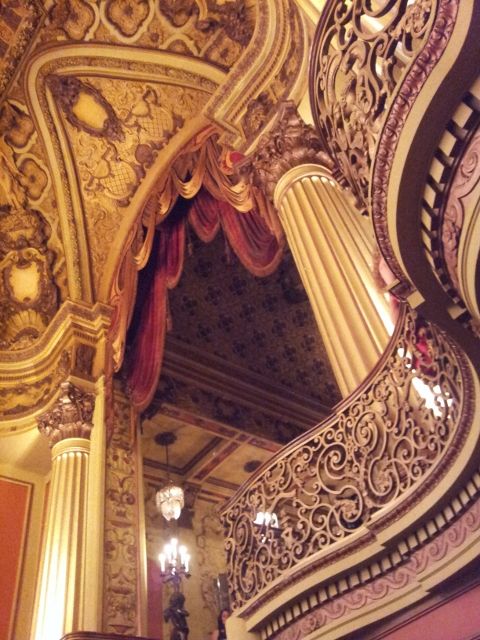
Even before we ducked out of the street, sauntered past the vintage ticket booth and stepped onto the thick carpet of the theater, we had already entered another era. An era of suave gentlemen in suits, suspenders and fedoras loitering next to shiny sports saloon cars, while women with curled updos, A-line skirts and ruby lipstick gossiped together in twos and threes.
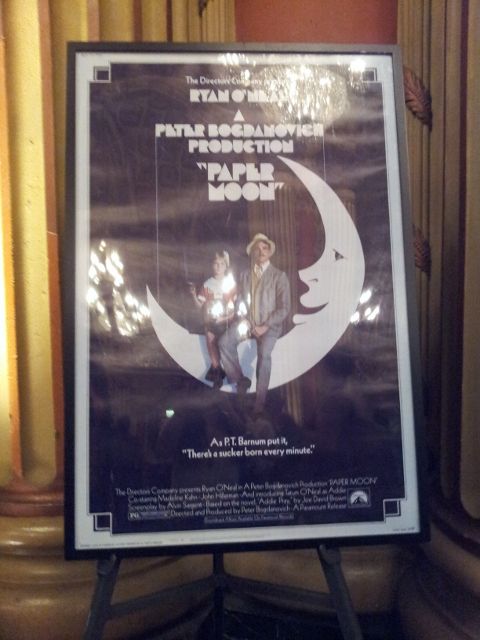
We handed over our tickets for the Los Angeles Conservancy’s Last Seats Remaining screening of the 1973 film Paper Moon, starring Ryan and Tatum O’Neal. In the hazy light of dusk, it didn’t take much to imagine being back in the 1930’s, the excitement of opening night electrifying the night air. The glamorous moviegoers dressed to the nines, anticipating so much more than a simple movie viewing experience – expecting to see and be seen.
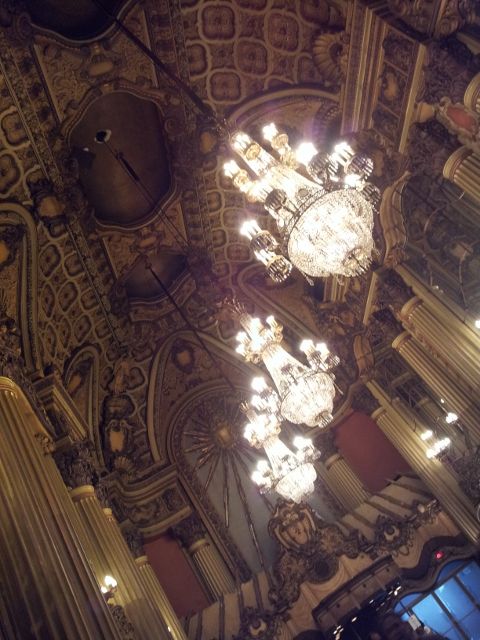
This illusion followed us through the doors of the Los Angeles Theatre. Inside the main lobby, our eyes were instinctively drawn 50 feet upward towards tiered crystal chandeliers casting alluring lights and shadows on the elaborately painted ceiling, like something you would expect in a royal palace.

Exactly the effect which H. L. Gumbiner, the theater’s owner, and S. Charles Lee, its architect, were going for when they began building in 1931. They chose Broadway for its reputation as the principal theater districtof Los Angeles – the perfect place for the theater they hoped would be the epitome of the lavish romanticism and glamour of the movie-going experience, even in the Great Depression. The pair spared no expense, spending $1.5 million in the six months required to build the theater.
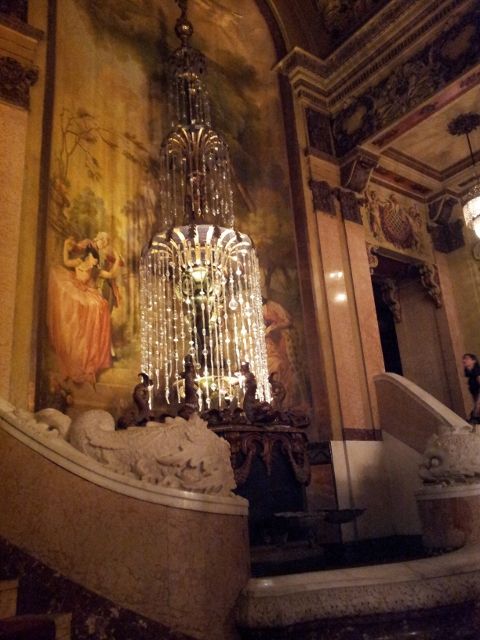
Lee in particular was interested in the confluence of historicism and modernism, and his work shows the influence of Frank Lloyd Wright, the Ecoles des Beaux Arts, Art Deco and, in the case of the Los Angeles Theatre, Louis XIV’s Versailles Palace. Crimson velvet carpet plush underfoot, towering Corinthian columns, and paneled mirrors–inspired by the famed “Hall of Mirrors” –complete the main lobby’s French Baroque theme, opening up to the grand staircase, its intricate bronze gilded banister leading guests to the marble fountain dripping with streaming crystal.
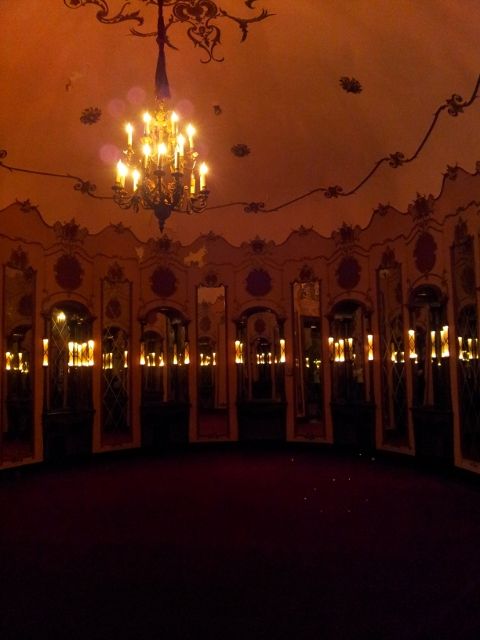
Before heading into the theater itself, we took another set of carpeted staircases down to the basement lounge, which, in the theater’s heyday, was fully furnished with sofas, chairs, potted plants, and other niceties necessary for relaxing. One might, for instance, travel to downtown via streetcar, deposit the children in the playroom with the on-staff nurse, who would watch the little ones as they went down the slide, played with toys, or played make-believe in the sandbox. If you arrived early enough, you could walk down the street for a bit of shopping, then return to the lounge to rest and wait for the next film to begin showing.
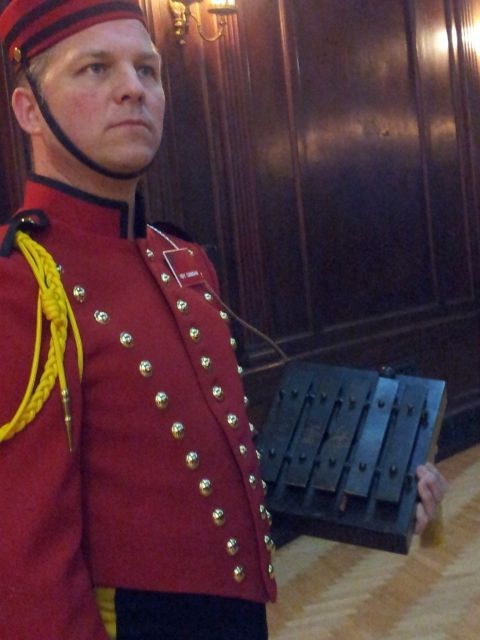
Women could exit the lounge to the ladies room, which opens up to a luxuriously carpeted oval room walled with dark wood vanities and three-sided full-length mirrors in front of which elegant ladies could powder their noses and check their carefully pinned coifs. Inside, each restroom stall had its own maid in waiting, with a special button to call for an attendant. And on opening night, each of the 16 marble vanities was decorated with a silver comb and brush set that guests could take home as a parting gift.
After our brief detour, we headed back to the theater to find our place amongst the 2,000 small cushioned seats set close together, personal space clearly not the premium then as it is now. Overhead, the second and third tier balconies were also beginning to fill with guests. Smart phones dotted the otherwise dim theater as guests took pictures or checked in online.
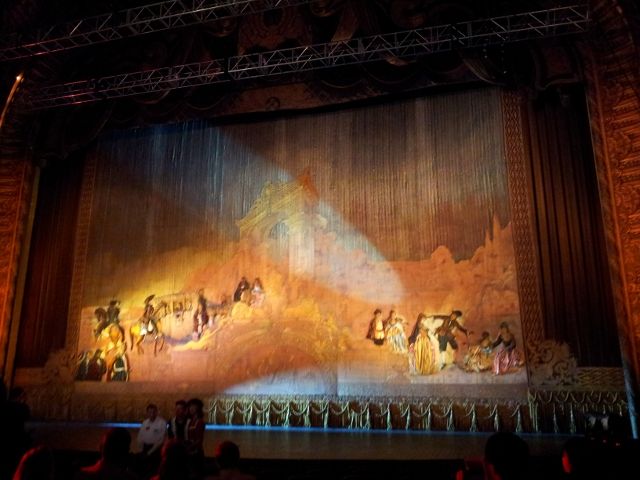
In lieu of a blank screen, the Los Angeles Theatre has something akin to a stage, its draped curtain an incomplete, embroidered mural depicting scenes from the life of Louis XIV – one of the most expensive curtains ever created for a movie palace. Every available remaining space showcases dark walnut paneling and extravagantly carved plaster done in the French Renaissance style – suitable to the tastes of the Sun King, and the National Register of Historic Places.
Upon opening, the theater boasted state-of-the-art technology, including a cutting edge sound system, air-conditioning, blue neon lights illuminating the aisles, and an electric switchboard counter for keeping track of available seats. Much of what was once the glory of the full-service theater is gone or out of site–its radio station, café, soda fountain, concession stand, shoeshine parlor, barbershop, soundproof crying room, phone booths, orchestra pit, and dressing rooms.
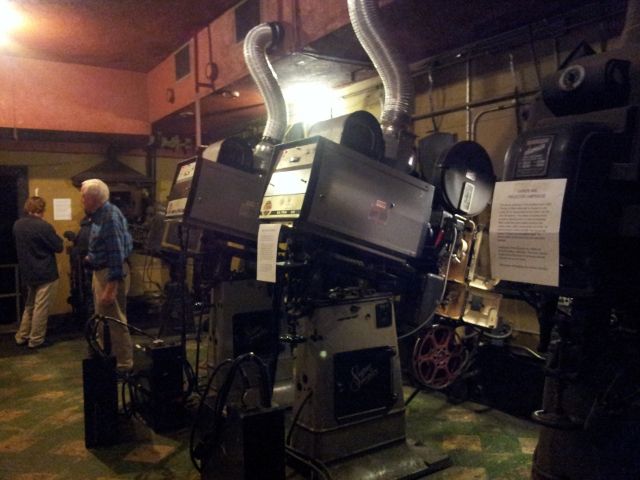
Despite its grandeur, the theater itself was never a commercial success. It did enjoy popularity during the 1960’s with the factory workers supplying America’s World War II efforts escaping to the theater after a long shift. The Los Angeles Theatre, however, was an independent theater whose competitors had major studio backing and first-run films from the likes of Paramount and Warner Brothers. The Los Angeles Theatre, along with the rest of the Broadway Theater District, suffered as a result of economic hard times and the migration of moviegoers to new theaters on Hollywood Boulevard like the Egyptian, Pantages and Chinese, and later to Westwood Village.
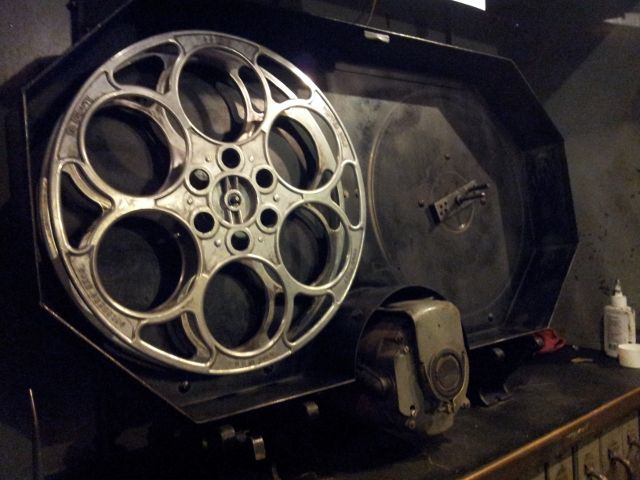
There are those, however, who are passionate about reviving the Los Angeles Theatre and the rest of the 12 theaters that occupy nine blocks of the Broadway corridor. City Councilmember José Huizar heads up the Bringing Back Broadway initiative, which is mid-way into its 10-year plan to preserve historical sites and restore the theaters that once evoked the “Golden Age of Hollywood,” as well attracting new businesses and restaurants, increasing parking, improving transit and infrastructure, and bringing back the iconic streetcar to the district.
How effective the Broadway theater district’s supporters will be in restoring it to its former glory, only time will tell. But for one night at least, the enchantment and glitz of bygone days seemed preserved in the walls of the Los Angeles Theatre; we watched “Paper Moon” fully ensconced in its entrance. Only after exiting its confines, walking to the parking lot, and driving onto the freeway – into traffic – did its spell slowly dissipate into the evening.
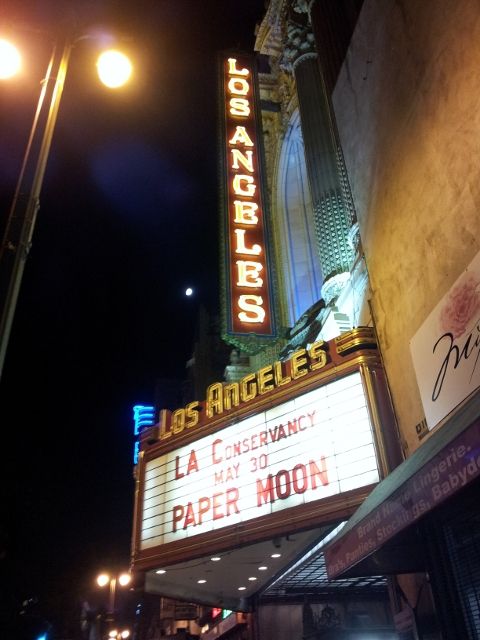
Get in touch with the author @lynnettewoo.
Subscribe to our newsletter